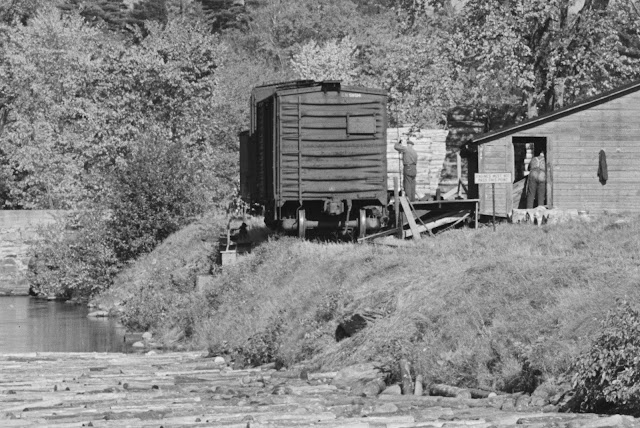It's been far too long since I've posted on this blog (although I do a better job keeping my Central Vermont blog up to date).
I truly hope everyone has had a happy and healthy Thanksgiving. I also sincerely hope your personal situation has been such that you've been able to spend time on trivial items like model railroading!
After having my car living in the driveway for going on a year, I took advantage of the unseasonably warm waether this weekend to (finally) clear out the garage - at least the point where both cars would fit.
Most of the stuff was, as I suspected, items we no longer need or simply junk. They have now all found their way to the appropriate places - which means they're no longer taking up space better suited for my car!
I did come across one plastic tote that had, among other things, several brown Westerfield boxes. After we moved out of the old house and into the temporary apartment I'd ordered several Westerfield kits as part of the November sale. (As an aside, this years sale is going on until the end of November. You can find details on the Westerfield website <HERE>). Naturally, I figured these were those kits.
But when I got these cars into the house I noticed one of the labels had a "BUILT" notation on them.
Sharp-eyed readers will note this is the old school Westerfield resin. Back in my Navy shipboard days I'd pick up a few Westerfield (or very early F&C) kits and bring them to build on the ship. I got a fair number of them built - especially when I was assigned to a fleet oiler. The one thing I couldn't do is paint these on the ship - so I built them and painted them when I got home.
I'm fairly certain this is one of those cars. That would mean I started it in 1990 or 91... and it's still not finished. Thirty years from start to completion of a model - a new personal best!The model survived its long slumber remarkably intact. One of the running board supports is gone, and the brake wheel is lost to the ages. Otherwise, it looks pretty good. It has trucks which means I must have done something with it off the ship at some point - I learned the hard way not to put trucks on the models I built on the ship - after finding a Westerfield H21 "rekitted" on the deck of the stateroom after a bouncy night of Cape Hatteras!
I'd made note of which Floquil paint I was going to use on this model, but that doesn't do me much good. Anyone have a suggestion for a currently available paint (preferably Vallejo) that would work for this car?
Of course, if pressed I can claim I was waiting for a better decal set to come along.
After all, you don't want to rush these things!














